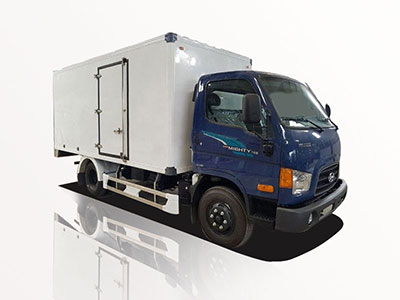Propane is a popular choice for heating, cooking, and grilling, making propane bottles an essential item for many households. Understanding the regulations around propane bottle storage is crucial for safety and compliance with local laws. This article explores everything you need to know about propane bottle storage regulations, ensuring you can store your propane safely and effectively.
Understanding Propane Bottles
What Are Propane Bottles?
Propane bottles, often referred to as tanks or cylinders, are containers used to store propane gas. These bottles come in various sizes, commonly ranging from 20 pounds for home grills to 100 pounds for heating and other purposes. Understanding the characteristics and uses of propane bottles is essential for proper storage.
Why Regulations Matter
Regulations concerning propane storage exist to prevent accidents, such as fires or explosions, and protect individuals and property. Adhering to these regulations is not only a legal requirement but also a matter of safety.
Key Regulations for Propane Bottle Storage
National Fire Protection Association (NFPA) Regulations
The NFPA provides guidelines regarding the safe storage of propane bottles. Their regulations include:
- Placement away from ignition sources
- Proper ventilation
- Protection from extreme weather conditions
Occupational Safety and Health Administration (OSHA) Standards
OSHA has established standards for the storage and handling of propane, including:
- Labeling of propane containers
- Inspection frequencies
- Emergency procedures
State-Specific Regulations
Overview of State Regulations
While NFPA and OSHA provide national standards, individual states might have stricter regulations. It’s essential to check local laws regarding propane storage. Common areas of regulation include:
- Distance from buildings
- Fire department regulations
- Local zoning laws
Examples of State Regulations
| State | Distance from Structure (Feet) | Indoor Storage Regulations |
|---|---|---|
| California | 10 feet | Prohibited indoors |
| Texas | 5 feet | Allowed with proper ventilation |
| Florida | 25 feet | Prohibited in residential areas |
Best Practices for Storing Propane Bottles
Proper Location Selection
Select a storage location that is:
- Out of direct sunlight
- Well-ventilated
- Away from sources of heat or flames
Storage Configuration
Store propane bottles upright to prevent leaks. Secure them to prevent tipping and ensure that they are not stored in enclosed spaces, like basements or garages.
Regular Maintenance and Inspection
Regularly inspect your propane bottles for:
- Sign of rust or corrosion
- Leaks (use soapy water to check for bubbles)
- Outdated safety features
Transporting Propane Bottles Safely
Transportation Guidelines
When transporting propane bottles, observe the following guidelines:
- Always keep bottles in an upright position
- Use a vehicle with good ventilation
- Secure bottles to prevent movement
Emergency Preparedness During Transport
Have an emergency plan in place. Keep a fire extinguisher accessible and inform anyone traveling with you about handling emergencies involving propane.
Common Mistakes to Avoid
Improper Storage Areas
A frequent mistake is storing propane bottles in poorly ventilated areas, like indoor garages or sheds. This can lead to dangerous buildup of gas in case of leaks.
Ignoring Expiration Dates
Always check the expiration dates on propane bottles. Using expired bottles can be hazardous.
Signs of Propane Leaks and What to Do
Identifying Gas Leaks
Signs of a leak may include:
- Smelling a distinct rotten egg odor
- Dead vegetation around the storage area
- Bubbles forming in a soapy solution applied to fittings
Emergency Response
If you suspect a leak:
- Evacuate the area immediately
- Do not activate electrical switches
- Contact the fire department
Environmental Considerations
Disposal of Expired Propane Bottles
Responsible disposal is critical. Many local municipalities offer special disposal facilities for expired propane bottles. Check your local guidelines for proper disposal methods.
Reducing Propane Consumption
Adopting best practices for energy efficiency in your home can reduce the demand for propane, thereby contributing to environmental sustainability. Consider the following:
- Invest in energy-efficient appliances
- Schedule regular maintenance on heating systems
- Use propane only when necessary, opting for electric or alternative sources when possible
Frequently Asked Questions (FAQ)
1. What is the maximum number of propane bottles I can store?
The maximum number of bottles you can store varies by state and local regulations. Check with local authorities to ensure compliance.
2. How do I know if my propane bottle is full?
You can check the weight of the bottle, use a gauge if available, or pour warm water on the tank; the area that feels cool indicates the level of propane inside.
3. Can I store propane bottles indoors?
In most cases, it’s not recommended to store propane indoors due to the risk of gas build-up. Always check your local regulations.
4. What should I do if I smell gas near my propane bottle?
If you smell gas, evacuate the area immediately, avoid using any electrical devices, and contact emergency services.
5. How often do I need to inspect my propane bottles?
You should inspect your propane bottles regularly, preferably every month, and after any incident that may have caused damage.
6. Is it legal to refill propane bottles at home?
Refilling propane bottles at home is generally prohibited and should only be done at licensed refill stations.





